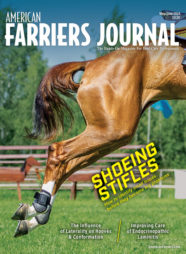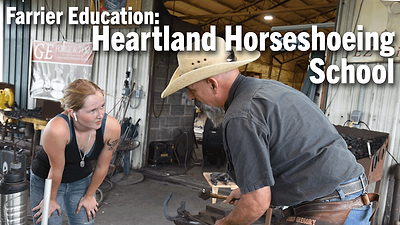By The Guardian
Farrier Alan Ashcroft recalls his dream: to build an old-fashioned smithy on a particular plot he has in mind bordering the A66 on Stainmore, near where the counties of Cumbria, Durham and North Yorkshire meet.
A chestnut tree would be good — the kind Henry Wadsworth Longfellow featured in his poem "The Village Blacksmith."
“Under a spreading chestnut tree, the village smithy stands; the smith, a mighty man is he, with large and sinewy hands,” Alan recites as he trims the front hoof of a racehorse with a rasp.
Chestnut trees, besides supplying conkers, which though they are poisonous have been said to relieve horses of sickness and coughs, offer shade that allows both man and beast some respite from the horseflies that attack sweating animals in the open.
Such a pest, Alan thinks, provoked a racehorse to lash out with a hoof and knock him unconscious. Other occupational hazards include the hooves of rearing stallions, and “naughty” horses pulling and kicking so he mis-hits a nail or strikes his thumb with the hammer.
Slim as a whippet in his leather apron and work boots, this 25-year-old fell runner looks nothing like Longfellow’s beefy village smith.
He makes horseshoes from bars of mild steel, heated in the gas-powered forge at the back of his van until they glow. Seizing a shoe with tongs, he makes his cast-iron anvil ring with hammer blows while beating the hot steel into shape.
Alan’s traveling forge covers the Pennines, Howgills, Lake District and lowlands in between, setting up in fields and stableyards, to shoe all manner of steeds from ponies to cart-horses. He also works with the 60 Irish Thoroughbred racehorses. To speed their flying hooves, he fits them cold with feather-light horseshoes of aluminium that would melt in the forge’s heat.
“You can say I know the feeling,” he says. “When racing at Loweswater Show or over Nine Standards Rigg, I am lightly shod too, in fell-running shoes and athletic gear.”







Post a comment
Report Abusive Comment